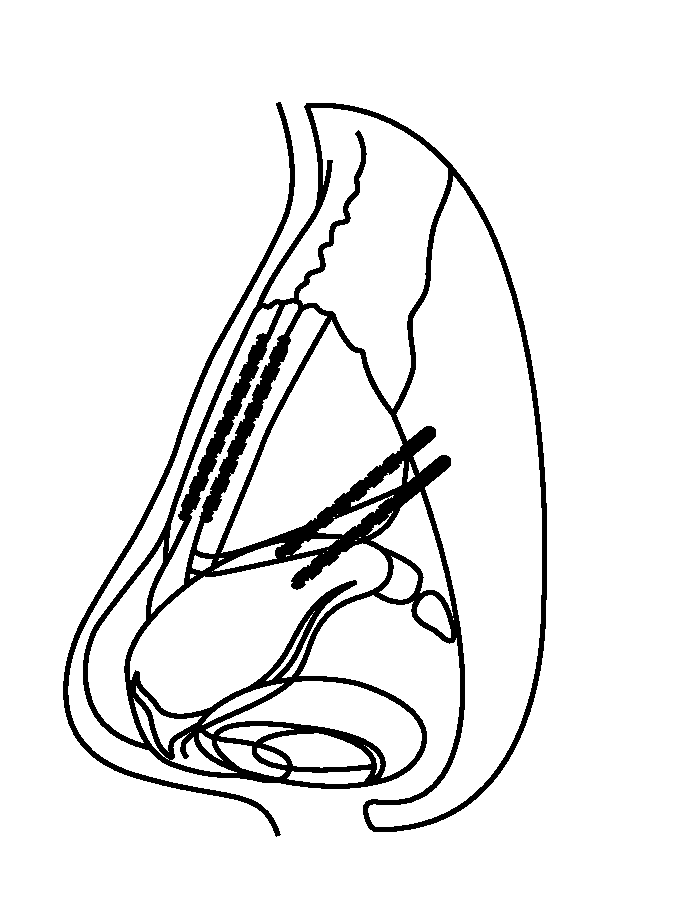Nasal implants and systems and methods of use
a technology for nasal implants and nasal arteries, applied in the field of nasal implants, can solve the problems of reducing the quality of life and affecting the health of individuals, and achieve the effect of increasing the flexibility of the implan
- Summary
- Abstract
- Description
- Claims
- Application Information
AI Technical Summary
Benefits of technology
Problems solved by technology
Method used
Image
Examples
example 1
[0211]Material samples testing Table 1 shows material property test results of candidate implants made into various shapes and sizes with the indicated inner diameter (ID) and outer diameter OD) from the indicated materials. The modulus of elasticity (E), cross-sectional inertia of the sample (I), and flexural rigidity (E·I) which represents the strength of the sample when bending, are indicated. The PLLA and PLLA-PGA samples were flexurally stronger than the other samples, presumably due to the strength of the PLLA and the rod shape of the PLLA-PGA sample. The PLLA-PDLA sample was weak in bending, presumably due to its thin-wall, tube shape. The PLLA-PCL sample was very flexible, presumably because it was in a glassy stage as its glass transition temperature is below room temperature; overall it did not behave like a typical solid material.
example 2
Table 2 Shows Moldability with Temperature and Brittleness
[0212]Testing performed on the material samples. Samples were cut to 15 mm length. Samples were tested at room temperature and heated to several temperatures in an oven and left to sit to ensure the materials were a consistent temperature throughout the sample. Each sample was tested by removing it from the oven and immediately bending it by hand to 90 degrees (if possible). Observations of how much force was required, whether the material held the shape, cool off time, and material brittleness were recorded and summarized.
example 3
[0213]An implantable sheet was cut and tested for fitting into a 16 gauge syringe. Samples fit through. When a scalpel is place accurately through the bridge trough, the sheet could be cut relatively easily. FIG. 53A and FIG. 53B show results from cutting an implantable sheet.
PUM
| Property | Measurement | Unit |
|---|---|---|
| outer diameter | aaaaa | aaaaa |
| outer diameter | aaaaa | aaaaa |
| length | aaaaa | aaaaa |
Abstract
Description
Claims
Application Information
 Login to View More
Login to View More - R&D
- Intellectual Property
- Life Sciences
- Materials
- Tech Scout
- Unparalleled Data Quality
- Higher Quality Content
- 60% Fewer Hallucinations
Browse by: Latest US Patents, China's latest patents, Technical Efficacy Thesaurus, Application Domain, Technology Topic, Popular Technical Reports.
© 2025 PatSnap. All rights reserved.Legal|Privacy policy|Modern Slavery Act Transparency Statement|Sitemap|About US| Contact US: help@patsnap.com



